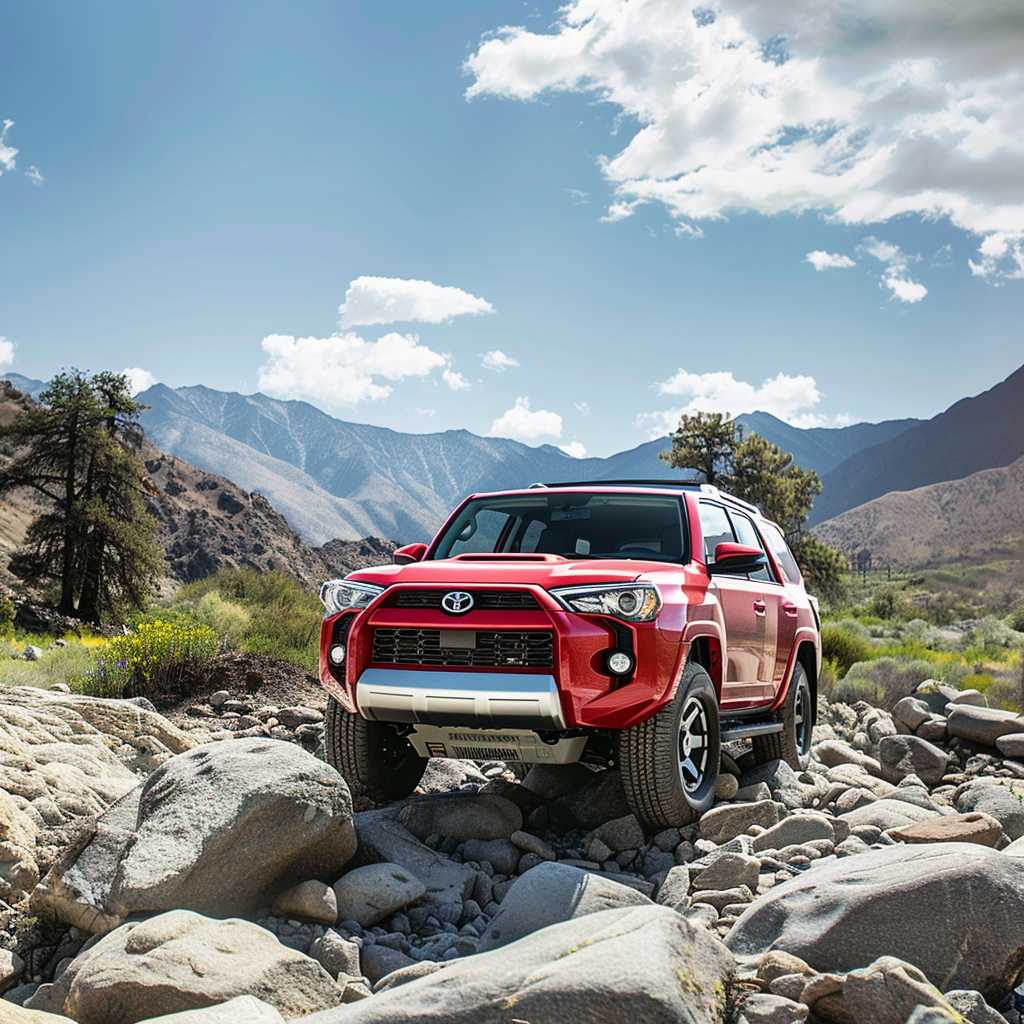## Evolution and Significance of the Toyota 4Runner: A Comprehensive Overview ##
For more than three decades, the Toyota 4Runner has carved a niche for itself as a rugged and reliable off-road vehicle that’s equally at home on highways. Manufactured by Japanese automotive giant Toyota, the 4Runner started life as a compact SUV and has grown into a midsize SUV with a loyal following. With durability as its hallmark, it’s recognized for longevity and the ability to traverse tough terrain with ease.
The Inception and Early Generations of the 4Runner
The Toyota 4Runner was first introduced in 1984 as a variant of the Toyota Hilux pickup truck, with added rear seats and a removable fiberglass top. Embodying the spirit of versatility, it seamlessly blended workhorse utility with family-focused comforts. Designed as a compact sport utility vehicle, it came with a solid front axle and a leaf spring suspension that exemplified toughness.
As it transitioned into its second generation in 1990, the 4Runner received an all-steel integrated body, which set it apart from its truck-based roots. This was a significant move away from the makeshift nature of its predecessor, directing it further into the user-friendly family vehicle segment without losing its rugged characteristics.
Modernization and Upgrades in Recent Times
The third-generation 4Runner emerged in 1996 with major architectural changes like a new ladder-frame chassis. Optional features such as rack and pinion steering and coil-sprung independent front suspension were introduced to refine ride quality and drivability.
Subsequent generations have seen steady advancements in technology and comfort features. The fifth (and current as of the knowledge cutoff date) generation, launched in 2009, bears witness to this evolution with advances such as multi-terrain select and crawl control for improved off-road capability. Moreover, modern safety features and technologies keep occupants secure and connected.
Trim Levels and Variants for Different Lifestyles
From humble beginning as a rather utilitarian offering, the 4Runner has expanded into multiple trim choices today, catering to various customer needs from daily commuting to unforgiving off-road excursions. From the basic SR5 to the luxury-oriented Limited, to the TRD Off-Road and TRD Pro models which offer factory-tuned off-road readiness, there is a 4Runner for every type of driver.
Challenges and Controversies
Despite its success, the 4Runner hasn’t been impervious to challenges. The SUV market has increasingly moved towards unibody construction for better handling and efficiency, while the 4Runner remains one of the last body-on-frame holdouts which affects its on-road refinement and fuel economy. Furthermore, due to changing safety regulations and consumer demands, there have been controversies around its crash test performances over various generations.
Global Reception and Market Impact
The Toyota 4Runner commands considerable market presence in North America but is less prominent globally due to differing market preferences for SUVs. In markets where lapidary terrains dictate vehicle capacity, its robust nature has garnered it acclaim.
Environmental Initiatives and Future Directions
With evolving environmental concerns and increasing emissions regulations, there is mounting pressure on all automotive manufacturers to provide green alternatives. In the case of Toyota’s overall portfolio, hybrid technology has progressed, suggesting potential for eventual electrified variants of vehicles like the 4Runner.
Community Engagement and Following
Part of what sets the 4Runner apart is the passionate community that rallies behind this enduring SUV. Clubs, forums, and social media groups teem with enthusiasts sharing experiences, modification tips, and adventure stories—all testament to its cultural footprint.
Competitive Landscape Analysis
In an era where crossovers dominate, what keeps customers fervently loyal to the classic appeal of the Toyota 4Runner? It lies amidst a competitive landscape featuring both similarly traditional SUVs equipped for off-road dominance as well as more city-focused crossovers that prioritize comfort over rugged capability.
